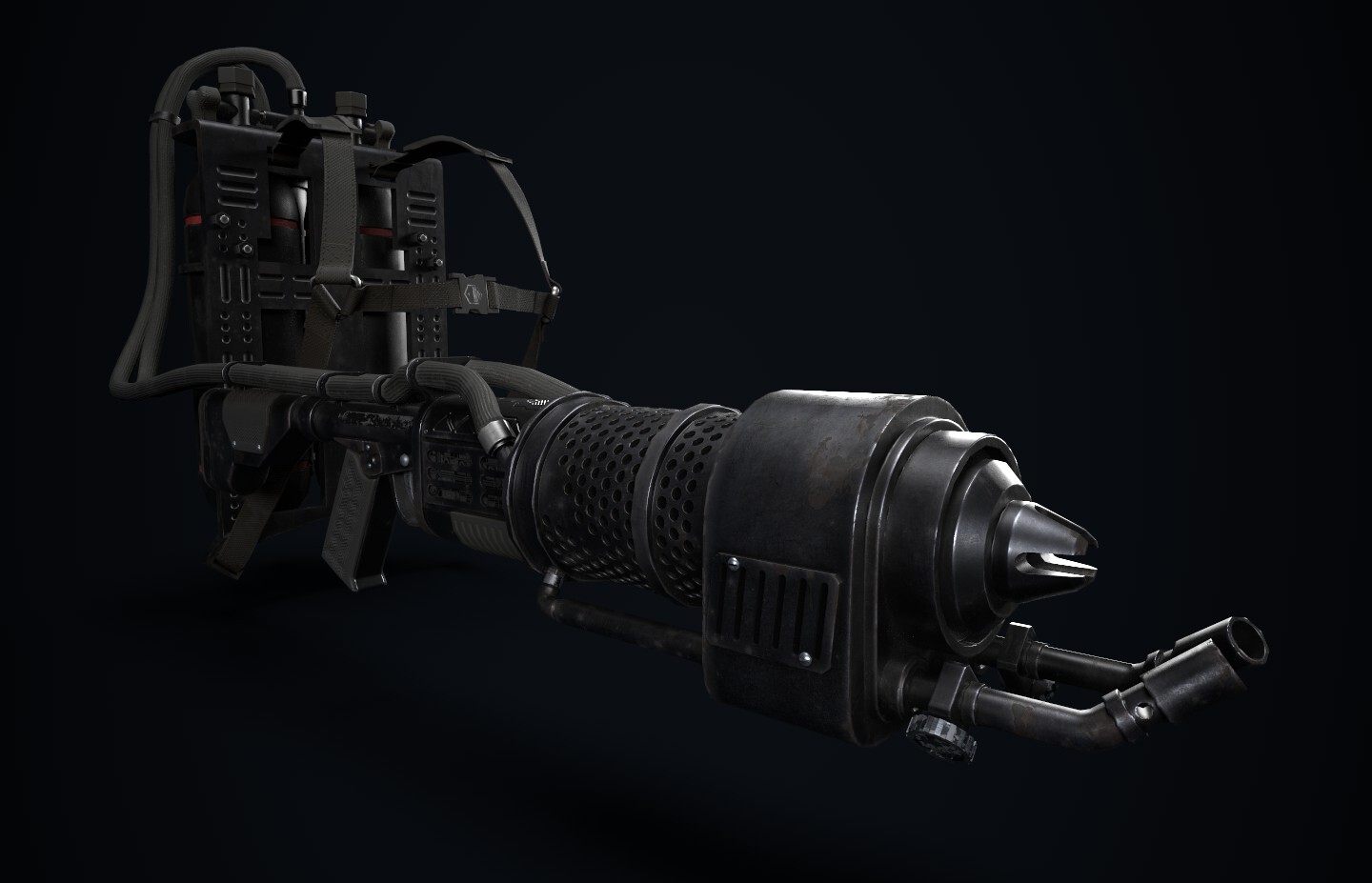Commodore Helix
Disintegrations done dirt cheap.

OUT OF CHARACTER INFORMATION
- Intent: to create a flamethrower weapon for Helix Solutions
- Image Source: Daniel Kulikowski
- Canon Link: Flamethrower
- Permissions: N/A
- Primary Source: Wookiepedia, Flamethrower
- Manufacturer: Helix Solutions
- Affiliation: Helix Solutions
- Market Status: Closed-Market
- Model: HSN "Beacon" Rad-Flamethrower
- Modularity: No
- Production: Limited
- Material: Durasteel, flamethrower components, radiation shielding
- Classification: Flamethrower
- Size: Average
- Weight: Heavy
- Ammunition Type: Radiotoxin-laced flamethrower fuel
- Ammunition Capacity: Average
- Effective Range: Long
- Rate of Fire: Low
- Damage Output: Very High
- Recoil: High
- High-pressure valve system, radioactive fuel
- Terrifying: As it promises a particularly gruesome and painful death, now or later, most sane troops aware of its reputation would rather take a blaster bolt (or run screaming) than face down this weapon.
- Bunker-buster: Like all flamethrowers, this weapon is quite effective at digging enemy infantry out of bunkers or foxholes.
- Good Range (For a Flamethrower): A unique and efficient high-pressure valve system enables the Beacon to project its deadly payload further and more accurately than most flamethrowers.
- Still a Flamethrower: Despite the pressure valve system, the Beacon is still a flamethrower, and its user must still get relatively close to deliver its fuel.
- Brisk Recoil: Likened by some troops to using a fire hose, the Beacon requires a firm stance (or strong arms) to use effectively.
- Destroyer: As extended use can poison the surrounding environment, this weapon is unsuitable for use in ground the wielder actually wants to maintain organic life in in the near future.
Purely a terror weapon, the Beacon was designed to dig out especially-fortified positions from ranges greater than a standard flamethrower could accomplish, but more importantly, it was designed to show the enemy the lengths Helix Solutions was willing to go to (or more accurately, stoop to) in pursuit of victory.
On its surface, the Beacon differs little from a typical flamethrower, essentially a nozzle and a pilot light used to deliver flaming chemicals at whatever the user disliked that day. What made it stand apart in cruelty were two factors.
First, the Beacon's fuel was under substantial internal pressure, greater than most flamethrowers, both allowing a slightly greater fuel capacity than the average, and a slightly greater range. The weapon was capable of delivering its burst of deadly rad-flames at distances of up to 70m.
Second and more importantly, the fuel was not standard flammable chemicals, but a fiendish mixture of Helix's own design. An extremely adhesive and slow-burning fuel mixture, capable of burning underwater or in vacuum, was step one. Step two was a copious addition of various highly radioactive substances, including an isotope of Cobalt that caused the flames the weapon emitted to burn a brilliant blue rather than orange.
The resultant nightmarish mix would adhere to surfaces and soldiers, burn for nearly ten standard minutes in most environments, belch countless filaments of life-destroying chemicals into the surrounding air, and promised a creatively horrific death like few others. Even those troops who survived contact with this weapon and the resultant burns frequently developed serious health problems not long after from the radiation, and those unfortunate enough to inhale its fumes in an enclosed space had a very brief lifespan prognosis.
It need hardly be said that most organic armies would not consider using this weapon, as it is nearly as dangerous to an organic user as to the enemy without wearing heavy radiation-resistant attire. As it can kill those who survive it long after the battle has concluded, all but the most depraved forces might balk at using this horror even on their enemies. Thankfully, as with most of their technology, Helix does not distribute this weapon except to close allies.
The weapon also possesses a brisk recoil when fired, as the extremely pressurized chemicals burst forth with extreme force. Despite the higher than normal range, the weapon still can't quite defeat the flamethrower's classic weakness, and while users have a little more leeway than normal, they still need to charge to close range to give their opponents nightmares.
Last edited:







